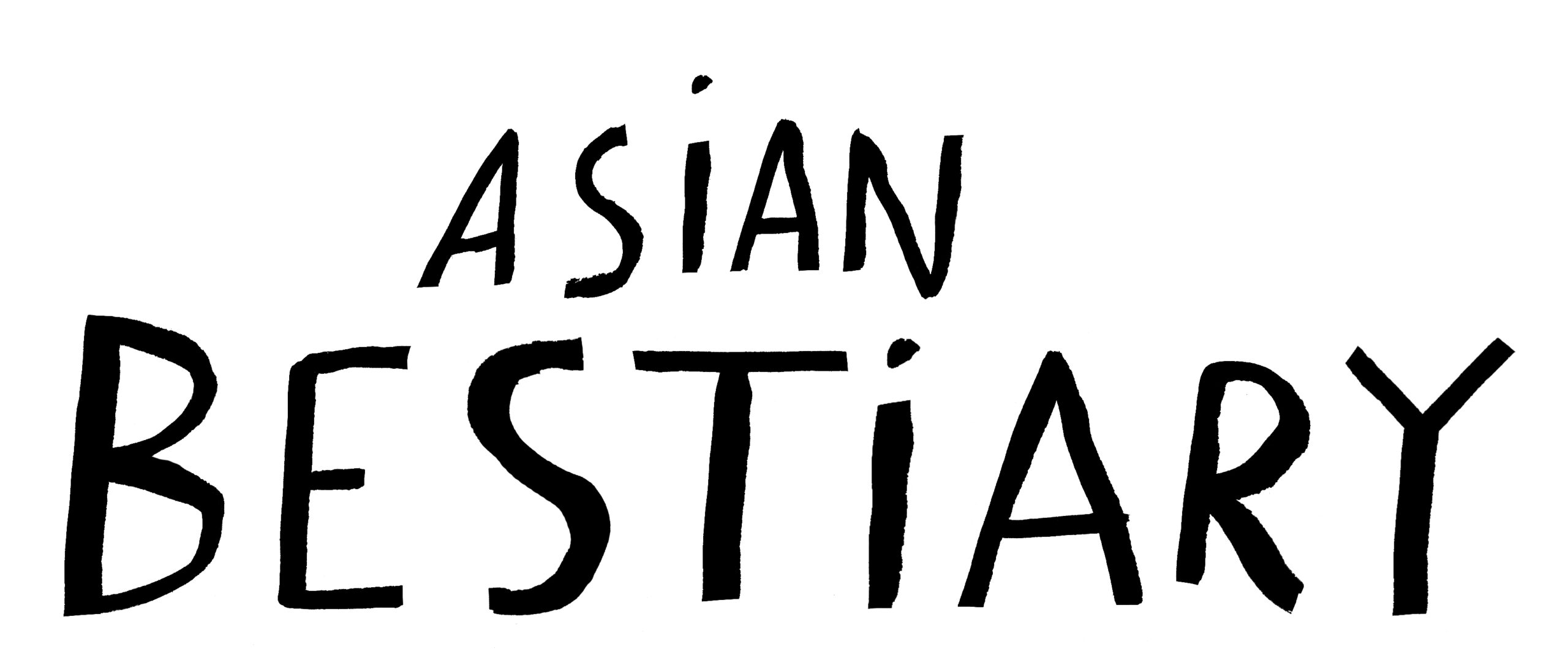Dragon God and Drought
Chisato Saito
Global issues such as climate change, natural disasters, and the COVID-19 pandemic might have affected our motivation and motif of creation. The Dragon God and Drought (2021) is a classical representation of a haiku poem whose author is unknown. Written vertically, it means that when the “dragon god also hides oneself among the trees, how heavy the drought is” (translation mine)! The dragon god derives from both the Chinese imaginary dragon and the Japanese snake, which are believed to control rain and water. At lakes and waterfalls, Japanese cultivators beg for rain and a good harvest, while fishermen pray for safety and a big catch at the sea. One of the elements of beauty in traditional calligraphy is a contrast between strong and elegant strokes, as well as the contrast between dry/faint and wet/deep colours.
Based on ancient pictographs of a dragon in Chinese dictionaries compiled in the Ming and Qing dynasties, Saito drew two dragons on a piece of wood. In the first smaller drawing on wood, they look like a monster, skeleton, or ghost (wearing a cross and triangular cloth, which are often associated with the dead). The central seal stamp in red is hand made. It reads Chisato(知里)with her sign, Sagittarius arrows. Saito also worked on dragon characters from the same Chinese origin, in a more contemporary style on a bigger scale which is the large black and white piece. At the time of production under the combined extreme stress from overwork, health problems and heartbreak, Saito swept a big brush to draw a giant dragon in the centre, then added a mini screaming dragon (her portrait) with long thin brush, at bottom right. After an exhibition, the photograph of this work was posted on a calligraphy magazine titled “sumi”, which attracted the attention of a professor in Chinese characters at a famous university. He had been searching for pictographs of dragons and was very amused to see their new development and deformation.

Chisato Saito
Chisato Saito has been practicing calligraphy since she was a six-year-old, under the guidance of Gyokusui Okada in Kyoto, Japan. Ms. Okada taught her to blend in delicate and asymmetric lines in a blank background (Fig. 1), and to learn traditional manners and customs. During her university days, where she majored in Cultural Studies, Saito started to promote calligraphy towards international audiences at art festivals and donated her work to friends. In 2008, she started her professional career as a research administrator in Tokyo, where she studied under another calligrapher, Ms. Taikyu Morotome. Ms. Morotome introduced her to various Chinese characters, such as canonical works from the Bronze Age to Tang and Song dynasties; this led her to try abstract contemporary art. Saito’s dragon series based on Chinese pictographs were exhibited in city halls and magazines.
She moved back to her hometown in 2017, and now engages with research administration and international affairs at Kyoto University. She provides a wide range of grant-related information in English towards international scholars on campus, reviews proposals, and assists academic collaborations conducted with ASEAN partner institutions. She still wears two hats: as a full-time research administrator and a weekend calligraphy lover. Both require her to be understanding and creative. She translates technical terms into simple ones, so that anybody from any background and discipline can fairly understand key concepts.




